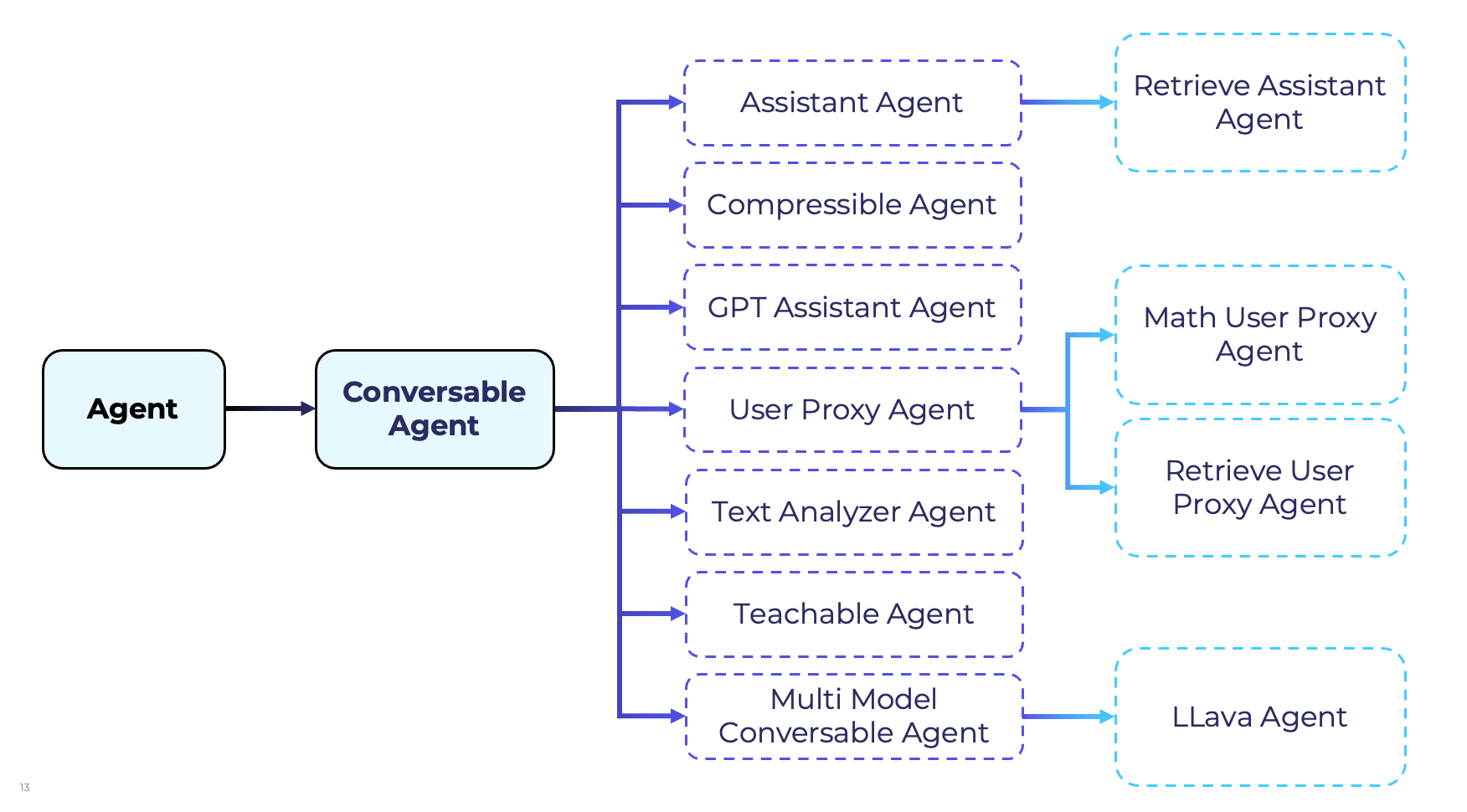AI Agents 101 with AutoGen: Introducing Multi-Agent Conversations

In this short article, I'll discuss AutoGen and its role in improving Large Language Model (LLM) applications through the use of multi-agent conversations.
What you’ll learn:
- What an AI agent does.
- The genesis and mechanics of AutoGen.
- Common agent types within AutoGen.
- Real-world applications using AutoGen.
- The advantages and challenges of AutoGen.
- A practical demo showcasing AutoGen's capabilities.
What's an AI Agent?
In this context, we are referring to an AI agent as an agent that has an LLM at his computational core. However, it does far more than generate text. It engages in conversations, accomplishes tasks, applies reasoning, performs custom functions, and shows some level of autonomous behavior.
Agents operate through prompts that provide personality, instructions, permissions, and context. For instance, an agent can fix a mistaken location in a weather query, turning an error into a correct forecast for the user.

Tools like LangChain also use AI agents (you can find out more about this here).
What's AutoGen?
AutoGen is a framework designed to create applications that utilize multiple agents in collaborative efforts to complete tasks. It’s an open-source and community-supported project with contributions from Microsoft and numerous academic institutions.
Developers can use AutoGen in various configurations, combining different LLMs, human input, and tools, and can even utilize local LLMs like those from Azure or OpenAI. The framework streamlines the management of LLM workflows and allows developers to define communication patterns and agent numbers for their specific needs.
Types of Agents in AutoGen
AutoGen has a variety of agents with different roles:
- Conversable Agent: This is the foundational class in AutoGen that can be programmed for a wide range of tasks.
- Assistant Agent: Focuses on task resolution, often suggesting Python code and interacting with other agents.
- Compressible Agent: Similar to the Assistant Agent but with the added function of compressing messages to save on token usage.
- GPT Assistant Agent: Connects with the latest OpenAI Assistant API and retrieves knowledge for use in applications.
- User Proxy Agent: Executes tasks and provides feedback to agents, acting under user command when needed.
- Math User Proxy & Retrieve User Proxy Agents: Specialized in solving mathematical problems and retrieving data based on given configurations.
- Text Analyzer Agent: Improves the quality of text communication.
- Teachable Agent: Learns from user interactions and recalls information for later use.
- Multimodal & Llava Agents: Capable of analyzing images and providing relevant information.

Industry Use Cases for AutoGen
AutoGen can be applied in various scenarios, from generating and debugging code to playing chess with visual board representation. It also includes enhanced chat capabilities for information retrieval.
In the automotive and manufacturing industries, for example, here are some potential ways AutoGen can be leveraged:
- Intelligent Customer Service Bots: AutoGen can power virtual agents that handle customer inquiries regarding car models, features, and availability. These agents can converse naturally with customers, pull up relevant information from the manufacturer’s database, and even guide them through complex processes like customization options or financing plans.
- Automated Quality Assurance: For manufacturers, AutoGen can assist in quality control by integrating with sensors and cameras on the production line. Agents can be programmed to analyze images for defects, interpret sensor data for inconsistencies, and communicate with other systems to initiate corrective actions without human intervention.
Pros and Cons of AutoGen
While AutoGen offers flexibility in agent roles and the ability to simulate complex organizational structures, it also presents challenges:
Pros:
- Ease of assigning specific functions to agents
- Capability for agents to self-reflect and provide feedback
- Simulation of organizational roles (e.g., Product Manager, Product Owner, Devs, QA, etc.) for structured workflows.
Cons:
- Complexity in determining the appropriate number of agents and their roles. (we need the ideal number of agents to have the balance between performance, costs and results and it's only possible to get there by trial and error)
- Significant costs associated with testing and scaling
- Challenges in debugging
- Need for effective memory management (every time agents talk to one another, the LLM is requested)
- Reliability and consistency (different runs of the application can produce different results)
Live Demonstration of AutoGen
Below you can watch me perform a demo of activating four distinct agents simultaneously: (1) one for creating an image based on a prompt; (2) another gathering data from Wikipedia; (3) a third combining description and image into an HTML file; and (4) one checking for task completion. Each shows AutoGen’s ability to automate complex tasks and integrate various data sources into a unified output.
Video: Introducing AutoGen - Enhancing LLM apps through multi-agent conversations by Francisco Gaspar
Conclusion
I hope with this article you have a clearer picture of the types of agents and what you can do with each and every one of them to help you make better decisions and improve your AI application.
Every day new and improved AI tools appear and new challenges arrive, and at xgeeks we want to be at the edge of the curve so we will continue to follow, search for and experiment with new breakthroughs and updates to tools like AutoGen, and of course, we'll keep you posted!
Want to learn more?
Check out these materials:
About the Author:
Francisco Gaspar is a software engineer at xgeeks with a focus on back-end development. He has a strong interest in AI and works on AI applications for major international brands.
